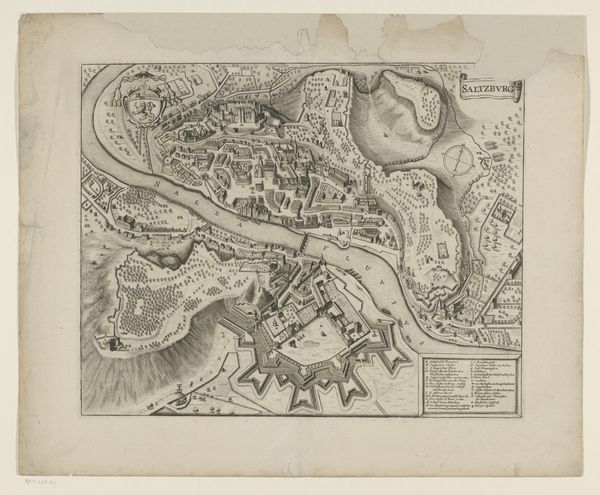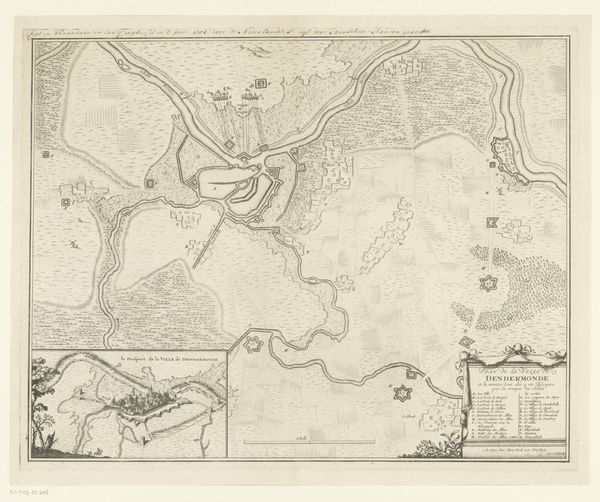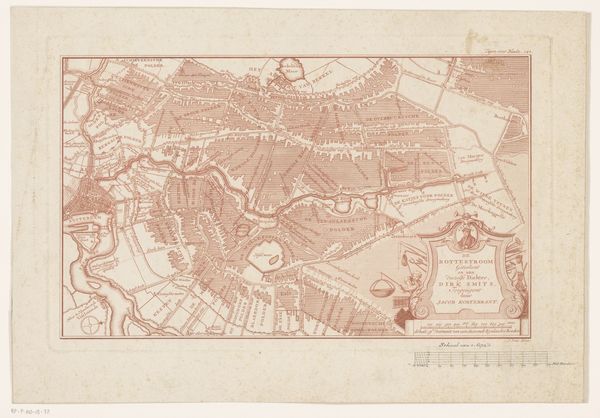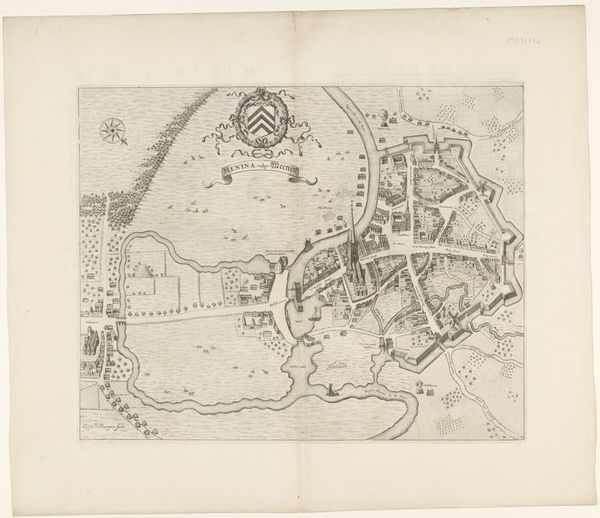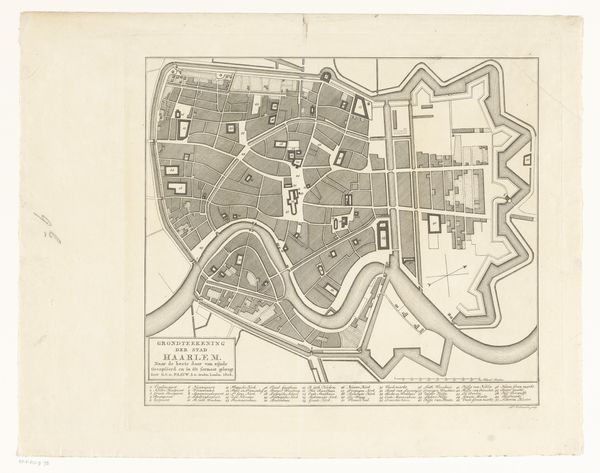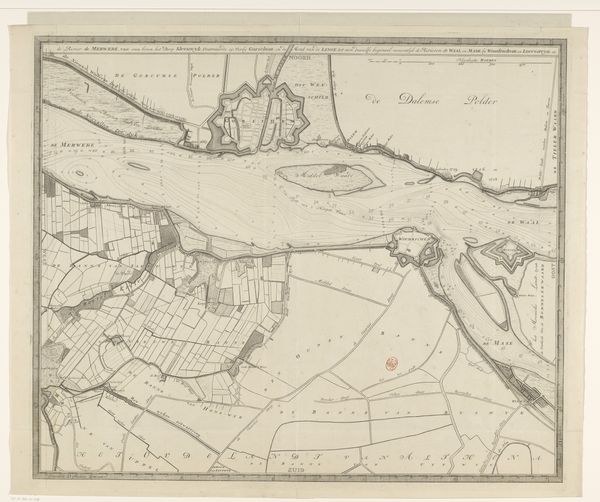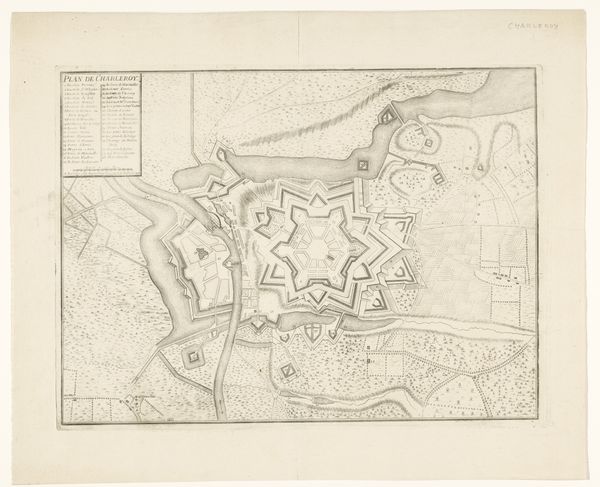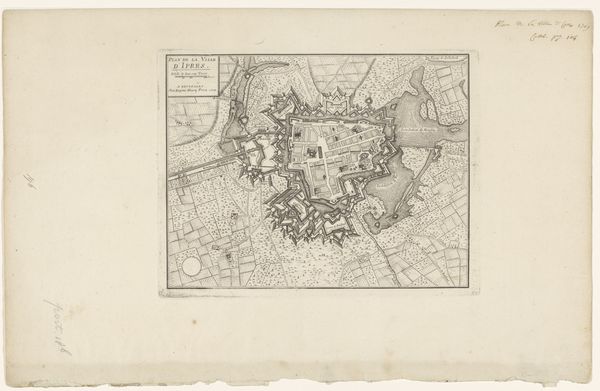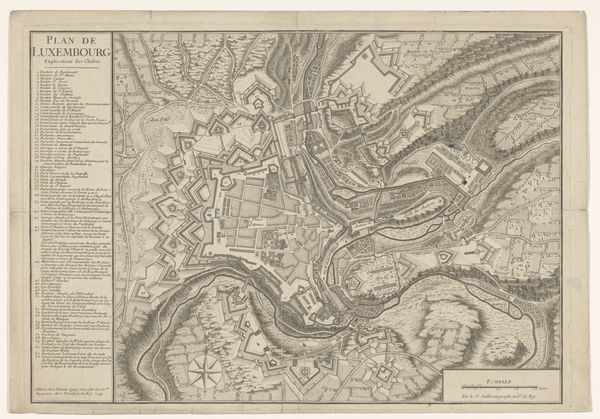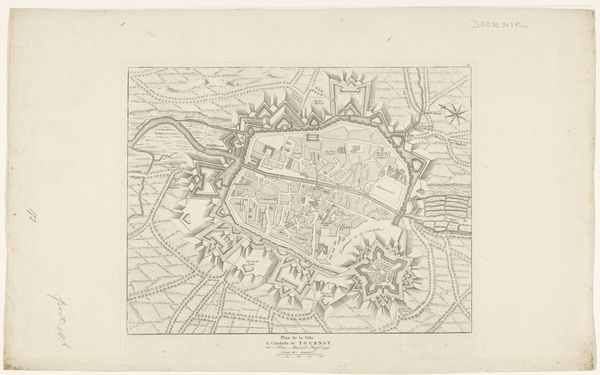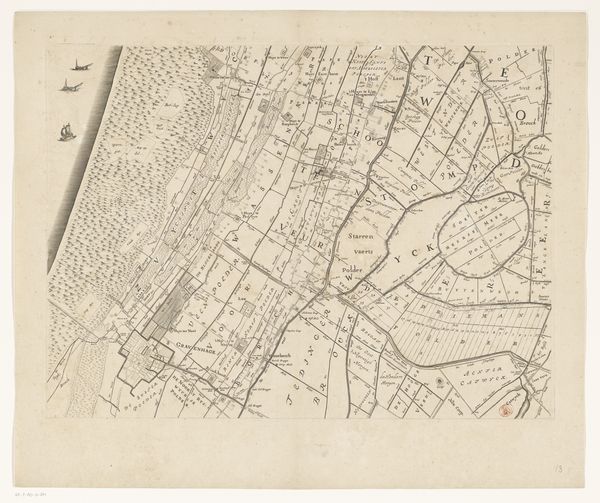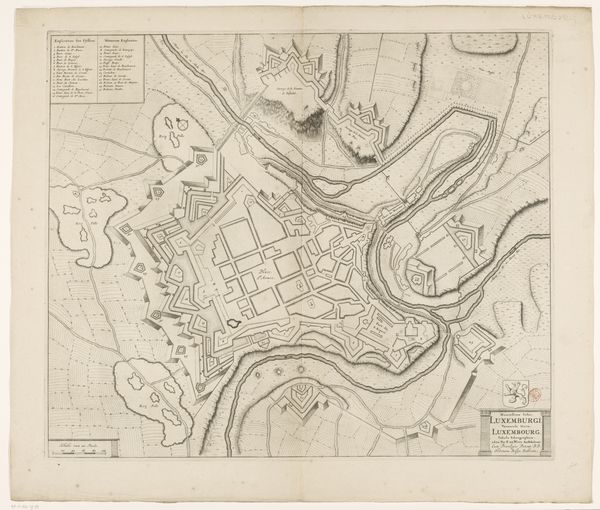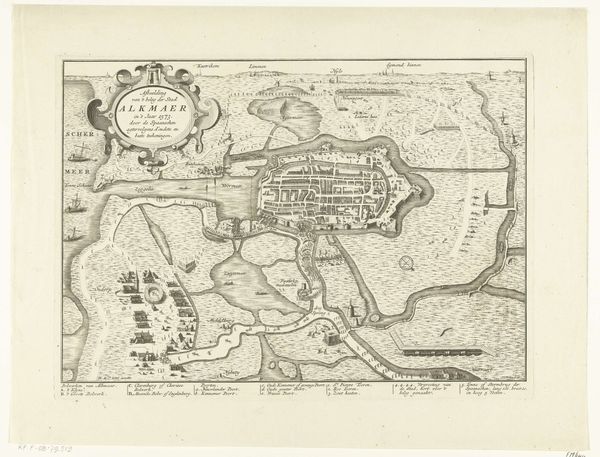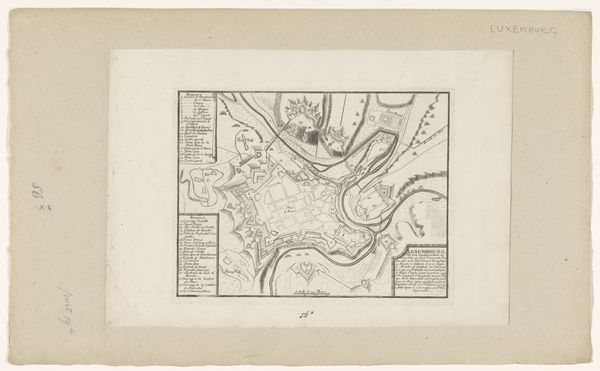
Kaart van het door Maurits belegerde Sluis, 1604 1604 - 1619
0:00
0:00
bartholomeuswillemszdolendo
Rijksmuseum
drawing, print, etching, paper, ink
#
drawing
#
narrative-art
#
baroque
#
dutch-golden-age
# print
#
etching
#
landscape
#
paper
#
ink
#
geometric
#
cityscape
#
academic-art
Dimensions: height 208 mm, width 324 mm
Copyright: Rijks Museum: Open Domain
Bartholomeus Willemsz. Dolendo made this map of the siege of Sluis by Maurits in 1604. He used the technique of etching, a printmaking process that harnesses the corrosive power of acid to make an image in metal, which is then inked and printed onto paper. The key to understanding this print lies in appreciating the labor that went into it. First, Dolendo would have coated a metal plate with a waxy, acid-resistant substance. Then, using a sharp needle, he would have drawn the design, piercing through the wax to expose the metal underneath. The plate was then immersed in acid, which bit into the exposed lines, creating grooves. Finally, the plate was inked, and the surface wiped clean so that the ink remained only in the etched lines. Pressed against paper, this yields the image we see. The crisp precision achieved through this technique is remarkable. The etched lines delineate not only the architecture of the besieged city, but also the broader political and social landscape of the time. So, next time you see a print, remember that it's not just an image, but the result of a complex, laborious process, deeply embedded in the history of craft and technology.
Comments
No comments
Be the first to comment and join the conversation on the ultimate creative platform.
